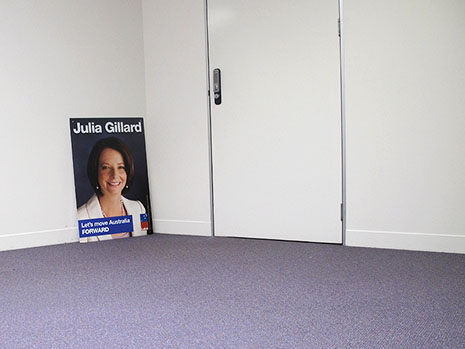The risk is that we might sleepwalk into changing the government in a fit of absent-mindedness.
— Tony Abbott, May 2007.
AUSTRALIA has just elected its first peacetime minority government in a century. A government making its first attempt at re-election has lost its majority for the first time since the depths of the depression in 1931. Julia Gillard faces the real possibility of being Australia’s shortest-serving peacetime prime minister. After a campaign in which – at least in terms of policy – it seemed like our two risk-averse parties were on sleeping tablets, the record-breaking results suggest Australian politics is suddenly on amphetamines.
And there’s more. If Gillard is forced out of office, she will go down not just as the first woman to become prime minister, but also as the fifth-shortest-serving of Australia’s twenty-seven prime ministers. But a defeat will give her a more ignominious place in the record books than that statistic suggests. Of the twenty-seven, three were caretaker prime ministers – deputies who took over when the incumbent died in office but were always known to be temporary. Among the “real” prime ministers, the shortest-serving was Arthur Fadden, who became prime minister amid the chaos of the collapse of the Menzies coalition government in 1941. His short but stormy tenure lasted only forty days before two independents crossed the floor to usher in the Curtin Labor government.
At the moment Julia Gillard has been prime minister for sixty days. She would therefore displace John Christian Watson, Australia’s – and the world’s – first Labor prime minister, who led the government for 112 days in 1904. Watson’s leadership came during the first nine years of Federation, when governments were short-lived and none of Australia’s first three elections delivered a parliamentary majority. It was a period when, in the cricketing analogy of Alfred Deakin (prime minister on three separate occasions in the decade), there were three elevens on the field.
But 1910 saw the beginning of the Labor versus anti-Labor competition that has been the central feature of our party system ever since. Over that period only one election, in 1940, has failed to deliver a majority in the House of Representatives. At that election, Robert Menzies’s government lost ground to the extent that his coalition could only govern with the support of two independents. The government imploded, although its collapse was due more to conflicts within the governing parties than to its minority position in the parliament. When the Curtin government took over – following the short Fadden interlude – it provided stable government despite its minority position, and went on to win a landslide in the 1943 election.
Hung parliaments could become more common in Australia. In the elections from 1996 to 2010, the proportion of the lower-house vote that went to small parties and independents has ranged between 14.3 per and 20.7 per cent. In Saturday’s election it was just over 18 per cent. Single-member electorates make it difficult for minority parties to win seats unless their support is geographically concentrated, but if around one-in-six Australians continue to support them then it is likely that minor parties and independents will continue to win House seats. Whether this results in a hung parliament will depend on the balance between the major parties.
Not only is the Rudd–Gillard government the first since 1931 to lose its majority in its first attempt at re-election, but it was also the first to depose its leader forcibly during its first term. A government removing its leader is a rare event, and almost never a recipe for success. Federally, it has only happened twice since the second world war – when McMahon replaced Gorton in 1971 and when Keating replaced Hawke in 1991. Keating could maintain his record as the only federal or state government leader who forcibly deposed his predecessor and went on to win the next election.
On the other side, Abbott could be the first to lead to victory a party that has endured two leadership coups in a single electoral cycle. After the Liberals’ 2007 defeat, Abbott was unable to get a seconder when he wished to contest the vacant leadership. Then, after Brendan Nelson was ousted, the internal crisis over the emissions trading scheme generated a challenge against Malcolm Turnbull; Abbott won by one vote, with his party seemingly hopelessly divided on one of the major issues of the day. The turnaround in the Liberals’ fortunes since then has been remarkable, with Abbott now possibly on the verge of government.
But if there is a change of government, that will also be unique. Normally when Australia changes government it does so decisively – with the new government gaining a clear majority in the House and an improved position in the Senate.
No new government in the last century has begun as a minority government. Nor has one begun with its Senate position having deteriorated since the last election. Labor and the Greens combined will hold a clear majority in the Senate, which would severely constrain a Coalition government’s legislative program.
So the Greens have a balance of power in the Senate and the independents probably have a balance of power in the House. The people have spoken – it is a clear mandate for confusion and it is likely to be delivered in spades. It’s likely that more political records lie ahead. •




